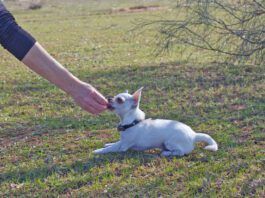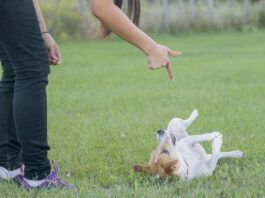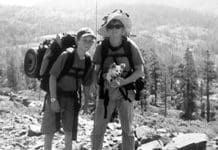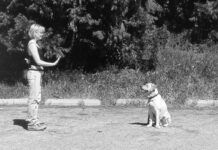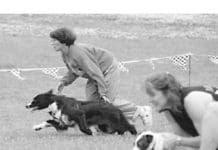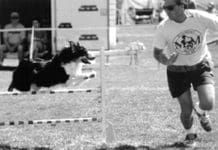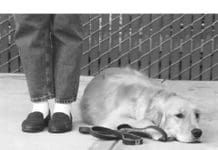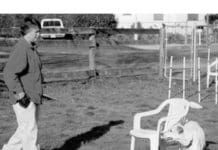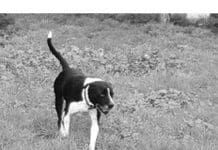New to Positive Dog Training?
Switching to positive training? At first, it might be frustrating for you – and your dog. The benefits, however, will last a lifetime. In positive training, the goal is to help the dog do the right thing and then reward him for it, rather than punishing him for doing the wrong thing. If he makes a mistake, the behavior is ignored, or excused with an “Oops, try again!” to encourage the dog to do something else.
Dog Training Camp Programs
Camping means different things to different people, but to dogs, camping means fun! Like most things with the word camp" in them
Good Books On Positive Training Techniques
The dog training field is now producing a steady stream of books that offer instruction and guidance, and many of them appear to promote dog-friendly training methods. But you can’t always judge a book by its cover! It’s more than disappointing to order a promising volume with a “positive” title, only to discover that hidden within the pages are suggestions to jerk on collars, glare into your dog’s eyes, and worse.
Training Dogs with Hand Signals
Silent cues are useful in any situation where your dog can't hear you, whether he's across a field from you, with you at a parade, if he's deaf, or suffering age-related hearing loss. There are two philosophies about training dogs with hand signals. Some people like to use small, subtle signals, barely visible to the human eye. A tiny finger movement cues the dog to lie down. Another elicits a sit. A small wave sends the dog into heel position. Impressive it appears that the dog is mind-reading!
The Use of ‘Bait Bags’ in Dog Training
The arguments against bait bags are not so obvious. The most compelling is that the presence of a bait bag is like a flashing neon sign - an obvious cue to your dog that it's training time and treats are handy. I stand firmly in the middle of the bait bag debate. I shop for lots of lightweight, loose-fitting jackets with large pockets so I can stash my bags of treats comfortably on my person without turning on the neon sign. Of course, my dogs know that I have treats in my pockets, but I always have treats in my pockets, so the presence of treats is not the cue that training is happening.
The Value of the Harness as a Basic Positive Training Tool
The harness is routinely used for certain canine activities such as carting, mushing, tracking, and guiding the disabled. It is also an important accessory for the canine seat belt, since it’s not safe to restrain your dog by his collar in a moving vehicle. Oddly, there isn’t much talk about the value of the harness as a basic positive training tool. With all the justifiable concern about the risk to a dog’s throat from pressure, or worse, jerks on a collar, it would seem that harnesses might find greater favor with positive trainers.
Flyball Racing
Flyball racing is fast and furious. Most of all, it's a great time for both dogs and people! The first time I saw Flyball
Canine Agility Training: The Ultimate Team Sport
By now, if you're into dogs, you've probably heard about agility. Maybe you've even seen it in action or tried it with your dog. Agility is one of the fastest growing dog sports in the world, and with good reason it's fun! Of all of the dog things I've done
Understanding Reward Based Dog Training
In the 1950s, behavioral scientist B.F. Skinner developed a number of principles that are applicable to all living things with a central nervous system. He found that animals are likely to repeat behaviors that are enjoyable/rewarding to them, and not likely to repeat behaviors that result in something unpleasant (punishment). Neutral stimuli – things that don’t matter to the animal – don’t have an impact on behavior one way or the other. Skinner demonstrated that humans can use these simple principles to modify an animal’s behavior. Rewards are the most reliable way to deliberately increase an animal’s offered behaviors; conversely, punishment decreases those behaviors. (See “The Four Principles of Operant Conditioning,” next at end of story). We use these behavioral principles in dog training with great success.
Off Leash Training: Building Reliability
There is no way to guarantee the safety of your dog off leash. I would like to think that if we trained hard enough, or long enough, or with the right methods, that we could overcome all of the risks, that our dogs really could be completely reliable and safe. But the fact is that when dogs are off leash in an unsecured area, there will always be a chance that their instincts or desires will lead them into the path of danger. In addition, our environment is often unpredictable. When dogs are off leash, there is the chance of a sudden bang, an unexpected animal, or something else that may frighten or harm our dogs.
Training Your Dog to Behave Around Guests
Whether you have a pup with normal puppy energy or an obstreperous teenager who has good manners lessons to catch up on, clicker training can be a magically effective and gentle way to convince a dog to calm down. No yelling, no physical punishment; just clicks and treats for any pause in the action. That said, the biggest challenge with a hyper" dog is that any praise or reward may cause her to begin bouncing off the walls again. It is nearly impossible to deliver a treat to an excitable dog while she is still in the act of being calm. By the time you get the treat to her mouth she is once again doing her Tasmanian devil act."
Post-Exercise Accupressure for Active Dogs
If your dog shows signs of acute pain or distress, we encourage you to take him to your holistic veterinarian. Acupressure is an excellent resource and complement to your dog’s health care since you can perform treatments yourself, but it is not a substitute for veterinary care. Your dog will enjoy playing, running, jumping, weaving through poles – whatever your sport – much more if you help take good care of his body. Acupressure is safe, always available, drug-free, and dogs love the touch of their special people.



